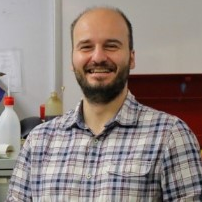Photonics Technologies for Smart Quantum Networks
A special issue of Photonics (ISSN 2304-6732). This special issue belongs to the section "New Applications Enabled by Photonics Technologies and Systems".
Deadline for manuscript submissions: closed (30 April 2022) | Viewed by 7493
Special Issue Editor
Interests: quantum key distribution systems; deployment-oriented QKD integration; integrated photonics for QIP applications; converged fiber/wireless networks for 5G and beyond
Special Issues, Collections and Topics in MDPI journals
Special Issue Information
Dear Colleagues,
In the last quarter of the 20th century, streams of millions of photons per each classical symbol started travelling along the fiber networks to realize the backbone of digital infrastructure. Approaching the era of practical and scalable quantum information processing, single photons are ready to undertake their new challenge by encoding and distributing quantum states along the communication infrastructure of quantum internet1.
This new mission for photonics requires the mobilization of research groups and synergies between classical and quantum optical communication engineers, working together on the development of practical building blocks and network segments for secured quantum-based infrastructure. Building upon the legacy of classical optical communications, quantum blocks and networks will leverage advances in prototypes and product developments of devices and subsystems to use photonic integrated circuits, advanced digital transmission ecosystems, and software-defined optical networking.
This Special Issue of Photonics, entitled “Photonics Technologies for Smart Quantum Networks”, welcomes articles addressing, among others, the deployment of a practical quantum toolbox enabling (sub)systems and quantum-enhanced secured networks and infrastructures. We expect to cover a variety of topics, including the following:
- Novel optical systems for QKD and QIP building blocks;
- Photonic integration in support of quantum technological blocks;
- QKD-enabled infrastructure including fiber/terrestrial FSO/satellite quantum links;
- Quantum secured infrastructure for networks;
- QKD and PQC integration and interfaces;
- Quantum networks and applications beyond QKD;
- DV-/CV-QKD and quantum safe security for future optical/wireless networks;
- Advanced features (SDN/NFV/AI/ML) for smart multinode connectivity;
- Entanglement distribution deployments and networks;
- Sources of entanglement for practical quantum nodes.
1 Wehner et al., Science 362, 303 (2018).
Dr. Giannis Giannoulis
Guest Editor
Manuscript Submission Information
Manuscripts should be submitted online at www.mdpi.com by registering and logging in to this website. Once you are registered, click here to go to the submission form. Manuscripts can be submitted until the deadline. All submissions that pass pre-check are peer-reviewed. Accepted papers will be published continuously in the journal (as soon as accepted) and will be listed together on the special issue website. Research articles, review articles as well as short communications are invited. For planned papers, a title and short abstract (about 100 words) can be sent to the Editorial Office for announcement on this website.
Submitted manuscripts should not have been published previously, nor be under consideration for publication elsewhere (except conference proceedings papers). All manuscripts are thoroughly refereed through a single-blind peer-review process. A guide for authors and other relevant information for submission of manuscripts is available on the Instructions for Authors page. Photonics is an international peer-reviewed open access monthly journal published by MDPI.
Please visit the Instructions for Authors page before submitting a manuscript. The Article Processing Charge (APC) for publication in this open access journal is 2400 CHF (Swiss Francs). Submitted papers should be well formatted and use good English. Authors may use MDPI's English editing service prior to publication or during author revisions.





